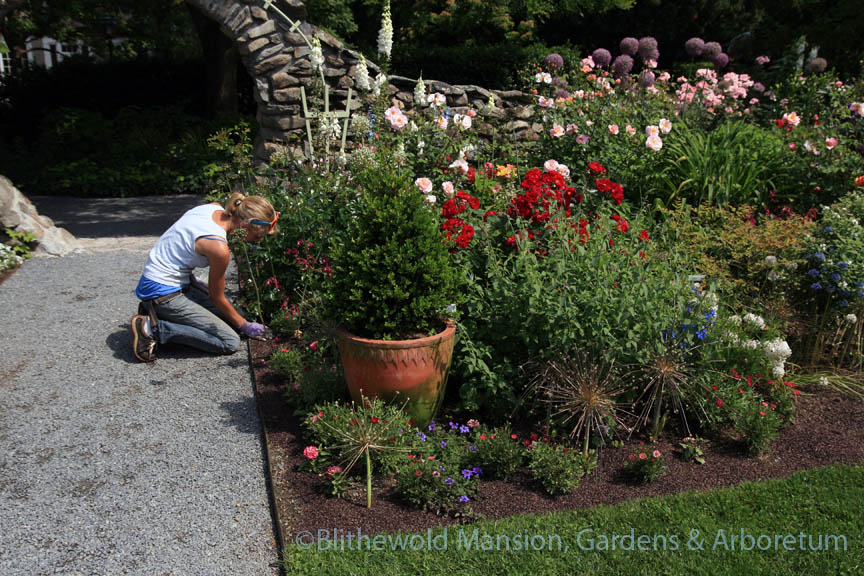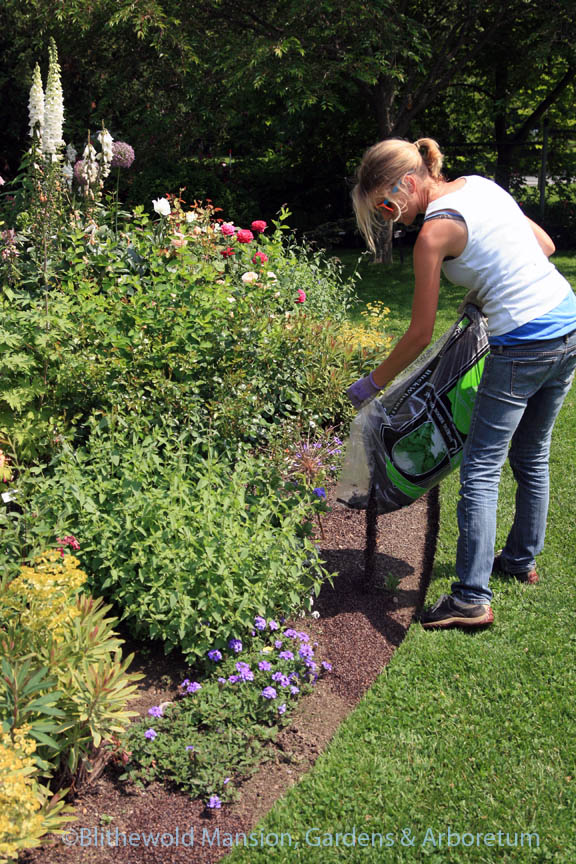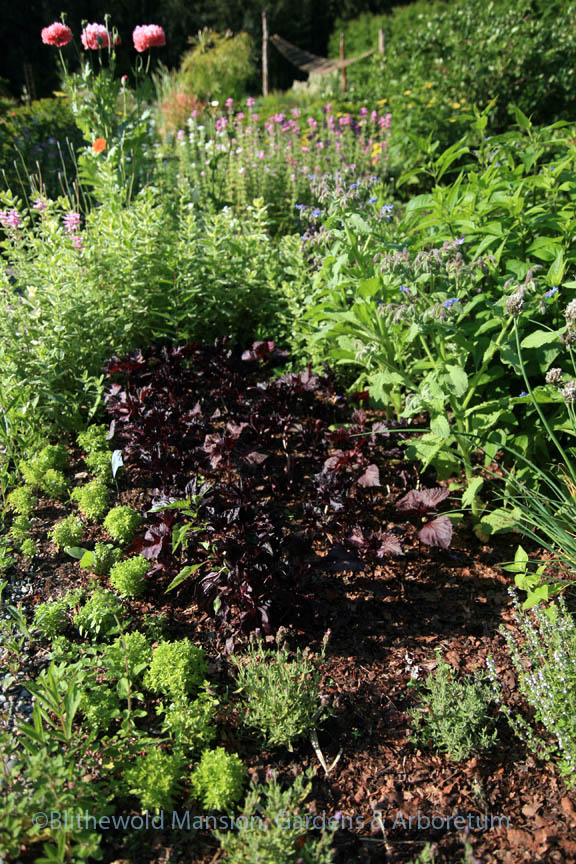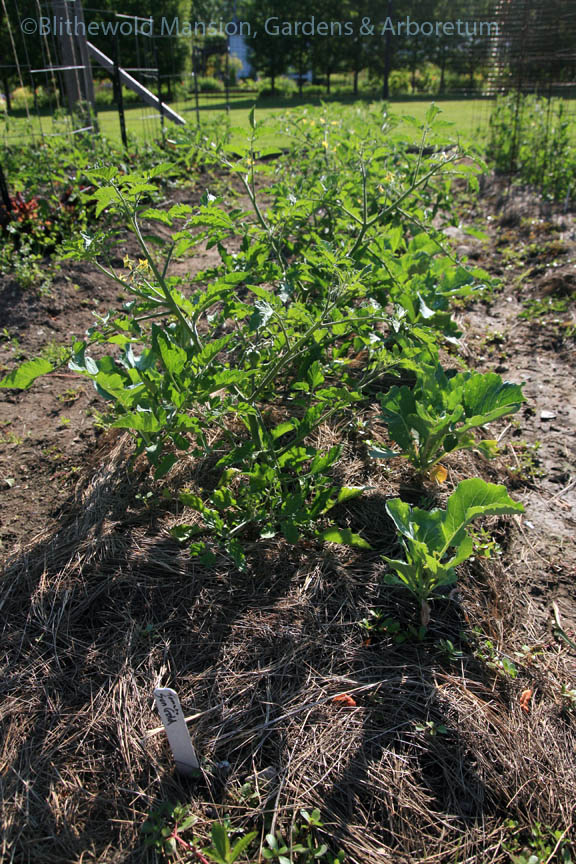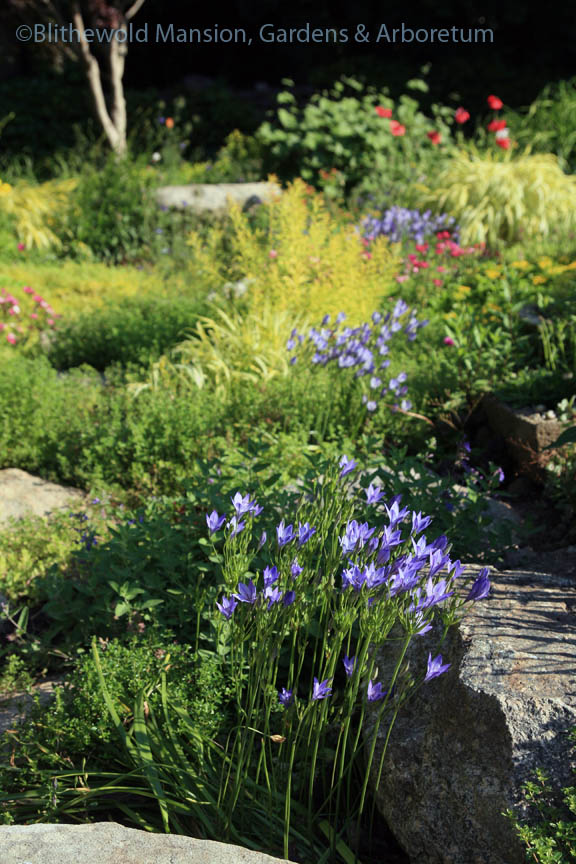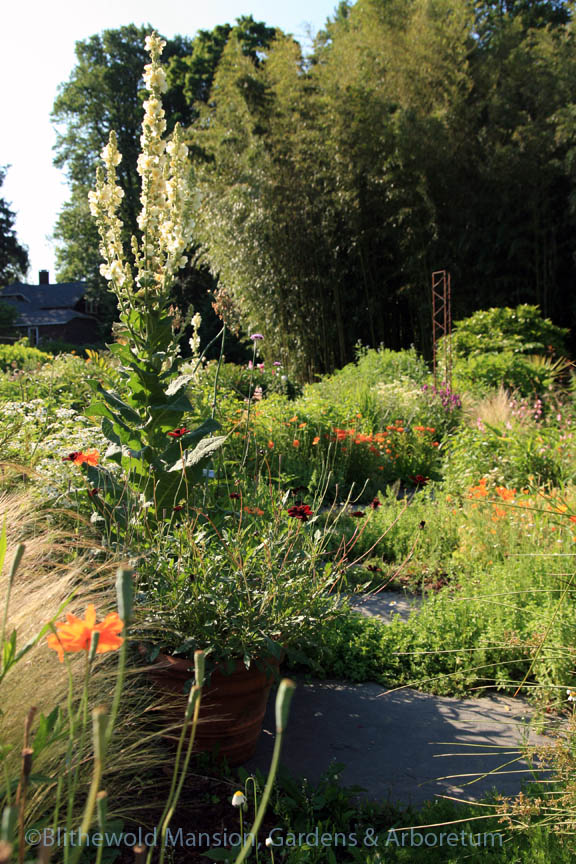Mulch ado
After something like 9 inches of rain fell on the gardens in the last week or so we haven’t had to worry too much (too mulch?) about soil moisture. But we’re nearly done planting (wahoo!) and mulching the gardens gives them a lovely finishing touch.
Aesthetics is one good reason to spread mulch. Insulation and weed suppression are others. But my favorite reason, especially this time of year, is to slow evaporation and conserve moisture in the soil. We don’t know (I haven’t heard) what’s in store for us weather-wise. The amount of rain we’ve had lately is certainly unusual but since the last downpour, the wind picked up, humidity levels dipped to perfectly pleasant, and the ground is actually starting to dry out. Mulch slows that process. It gives plants a chance to take up what water they need as they need it and will give us a slight reprieve from watering every minute of every day during a dry spell. That’s definitely worth hauling carts full of mulch and the tedious task of spreading it out. (I can only hope the volunteers agree.)
Back to aesthetics, mulched soil really does look better than bare soil. We use buckwheat hulls in the Rose and North Gardens and to my eye, and visitors’ (it’s one of our most frequently asked questions) there’s nothing more elegant. It’s very light weight and evenly textured, airy enough to allow rain to reach the soil. And over the course of the season, whether rainy or dry, it never becomes funky. (Unlike cocoa mulch, which is similarly textured but prone to mold, not to mention toxic to dogs.) Buckwheat hulls have only one downside: they’re expensive. A single 2-cubic-foot bag can run in the neighborhood of $20. Ouch. Which is why we buy bales of salt marsh hay for the vegetable garden and spread our own shredded leaves in the Idea Garden. Shredded leaves are abundant (here if not in my own garden) and free if you don’t count the time it takes to collect and shred them in the fall. They may not be as evenly textured as buckwheat hulls, but Gail and I happen to love the way leaves look (and smell). They also, like buckwheat hulls and salt marsh hay, are a brilliant soil amendment – providing aeration and organic matter as they break down and mix in.
But as much (as mulch?) as I like the look of mulch and appreciate what it does for the garden, I infinitely prefer to look at plants. There’s no room for mulch in a lushly planted garden and much less need for it. Even weeds, which generally have little trouble working their way skyward through a layer of mulch, have to really stretch to find daylight in a tightly packed garden. And when plants are allowed to cover the ground, they provide their own shade, keeping the soil cool and conserving moisture. I’ll admit, I love it when nature makes my job easier.
Do you spread mulch on your garden? What kind?

